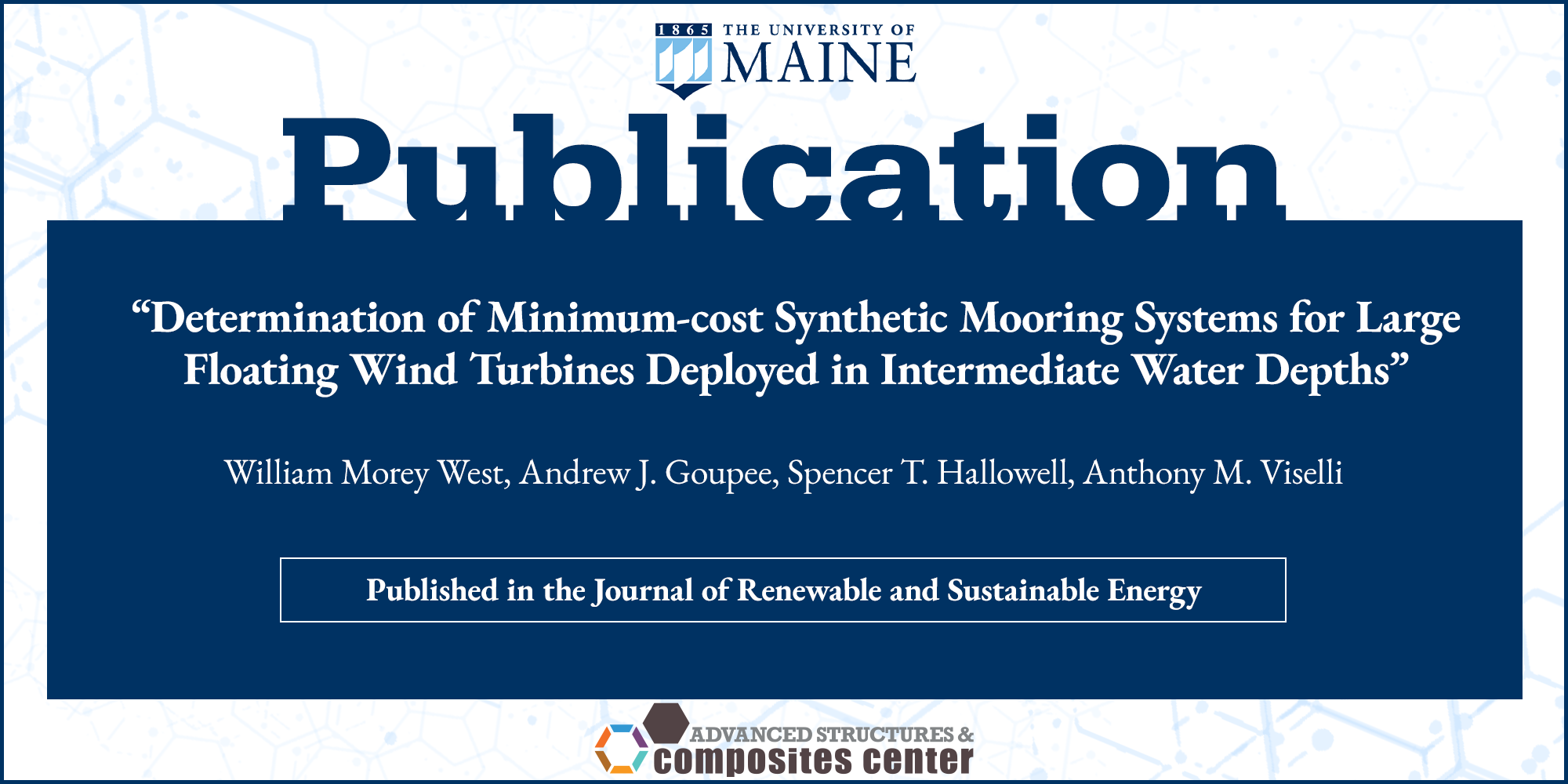
Article by West, Goupee, Hallowell, and Viselli published in the Journal of Renewable and Sustainable Energy
Orono, Maine — An article by ASCC offshore wind researchers William West, Spencer Hallowell, and Anthony Viselli, and UMaine mechanical engineering professor Andrew Goupee, was recently published in the Journal of Renewable and Sustainable Energy.
The floating offshore wind industry’s shift toward larger turbines adds complexity to the mooring system design process; turbine units are becoming larger and mooring systems need to be designed to handle the larger loads. In this article, ASCC researchers generalize an optimization methodology for determining the mooring system minimum cost-radius relationship for floating offshore wind turbine installations. This work employs many of the techniques developed in a previous study–such as a tiered-constraint screening method and estimation of the maximum line tensions–and applies them to a large-scale 15-MW turbine unit.
To ensure that the mooring system designs are realistic and deployable, a mapping of objective values is used to generate designs over a suite of mooring system radii, new components are added to the cost estimates, and additional constraints are added. These contributions enable a broader application of the optimization methodology for mooring system minimum cost-radius relationship. The new mapping approach and mooring designs led to a range of new low-cost designs for the 15-MW mooring system.
Determination Of Minimum-cost Synthetic Mooring Systems for Large Floating Wind Turbines Deployed in Intermediate Water Depths
Authors: William Morey West, Andrew J. Goupee, Spencer T Hallowell, and Anthony Viselli
Journal of Renewable and Sustainable Energy (2023)
Full Article
Received: 30 August 2022 / Accepted: 12 January 2023 / Published: 24 January 2023
Abstract
As the wind industry develops larger turbines for offshore deployment the problems with stationkeeping systems are exacerbated. As turbines increase in size, so do the loads on the turbine. Meanwhile, many offshore sites available for leasing occur in intermediate water depths (55-85m) which will appear ever smaller relative to the increasing platform size of floating offshore wind turbines (FOWTs). This complicates the process of designing mooring systems for these larger systems and emphasizes the importance of having a good methodology for automating this process. In this paper a routine is developed that will map objectives for a multi-objective genetic algorithm (MOGA) to obtain mooring radius-lowest cost designs over a range of radii simultaneously. This work will implement and expand on a tiered-constraint evaluation scheme that was developed in previous work by West et al. [1]. New components and constraints are added to the optimization problem to allow the optimizer to find realistically deployable designs with reasonably accurate cost estimates. These techniques will then be used to find the most economic mooring designs for a 15-MW floating offshore wind turbine with a hybrid mooring system.
Keywords: Wind Energy; Design Optimization; Mooring System Design
Determination Of Minimum-cost Synthetic Mooring Systems for Large Floating Wind Turbines Deployed in Intermediate Water Depths
Contact: Katelin Moody, katelin.moody@maine.edu
